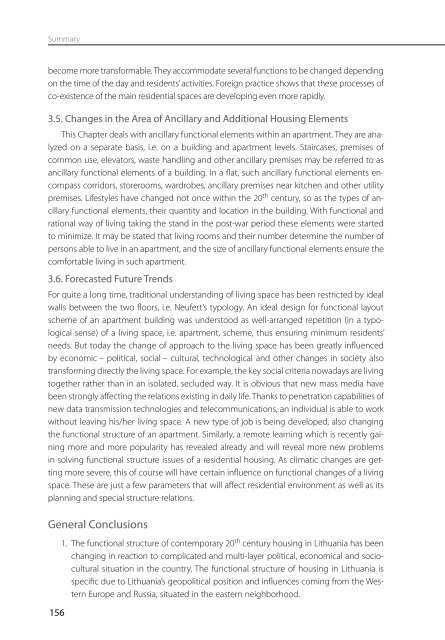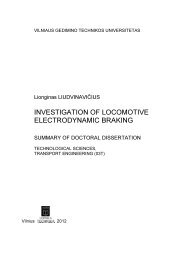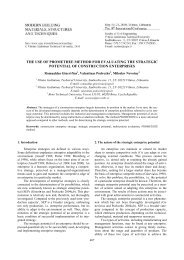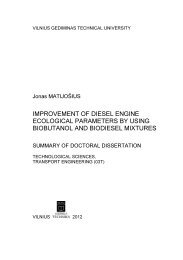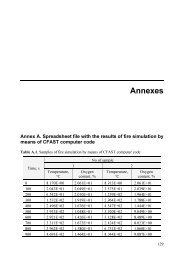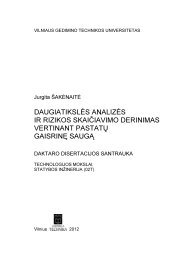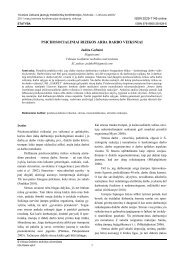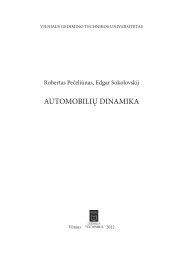daugiabuÄÂių funkcinės struktÅ«ros raida lietu - Vilniaus Gedimino ...
daugiabuÄÂių funkcinės struktÅ«ros raida lietu - Vilniaus Gedimino ...
daugiabuÄÂių funkcinės struktÅ«ros raida lietu - Vilniaus Gedimino ...
- No tags were found...
Create successful ePaper yourself
Turn your PDF publications into a flip-book with our unique Google optimized e-Paper software.
Summarybecome more transformable. They accommodate several functions to be changed dependingon the time of the day and residents’ activities. Foreign practice shows that these processes ofco-existence of the main residential spaces are developing even more rapidly.3.5. Changes in the Area of Ancillary and Additional Housing ElementsThis Chapter deals with ancillary functional elements within an apartment. They are analyzedon a separate basis, i.e. on a building and apartment levels. Staircases, premises ofcommon use, elevators, waste handling and other ancillary premises may be referred to asancillary functional elements of a building. In a flat, such ancillary functional elements encompasscorridors, storerooms, wardrobes, ancillary premises near kitchen and other utilitypremises. Lifestyles have changed not once within the 20 th century, so as the types of ancillaryfunctional elements, their quantity and location in the building. With functional andrational way of living taking the stand in the post-war period these elements were startedto minimize. It may be stated that living rooms and their number determine the number ofpersons able to live in an apartment, and the size of ancillary functional elements ensure thecomfortable living in such apartment.3.6. Forecasted Future TrendsFor quite a long time, traditional understanding of living space has been restricted by idealwalls between the two floors, i.e. Neufert’s typology. An ideal design for functional layoutscheme of an apartment building was understood as well-arranged repetition (in a typologicalsense) of a living space, i.e. apartment, scheme, thus ensuring minimum residents’needs. But today the change of approach to the living space has been greatly influencedby economic – political, social – cultural, technological and other changes in society alsotransforming directly the living space. For example, the key social criteria nowadays are livingtogether rather than in an isolated, secluded way. It is obvious that new mass media havebeen strongly affecting the relations existing in daily life. Thanks to penetration capabilities ofnew data transmission technologies and telecommunications, an individual is able to workwithout leaving his/her living space. A new type of job is being developed, also changingthe functional structure of an apartment. Similarly, a remote learning which is recently gainingmore and more popularity has revealed already and will reveal more new problemsin solving functional structure issues of a residential housing. As climatic changes are gettingmore severe, this of course will have certain influence on functional changes of a livingspace. These are just a few parameters that will affect residential environment as well as itsplanning and special structure relations.General Conclusions1561. The functional structure of contemporary 20 th century housing in Lithuania has beenchanging in reaction to complicated and multi-layer political, economical and socioculturalsituation in the country. The functional structure of housing in Lithuania isspecific due to Lithuania’s geopolitical position and influences coming from the WesternEurope and Russia, situated in the eastern neighborhood.


